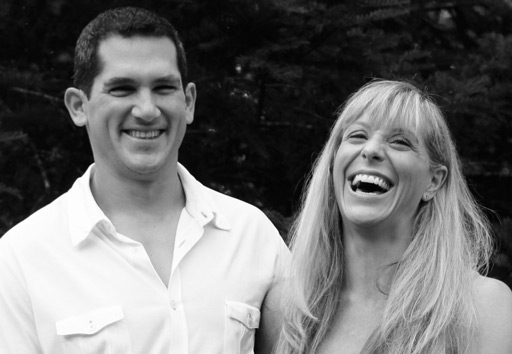In today’s world, we have the greatest technology in history and are more “civilized” than ever before, yet there is an appeal to something in our past. I believe our lives have been so domesticated that sometimes we can feel like zombies, disconnected from our living surroundings. I believe we are so tamed that feeling “fine” is acceptable but deep down we crave to recapture wild health, feel fully alive and be great.
Part of this internal desire can be seen in the popularity of going Paleo. The Paleo diet has risen from obscurity with Dr. Loren Cordain to being featured on the cover of popular magazines, talked about on TV shows and even connected to politicians in the news.
If you haven’t heard of the Paleo diet by now, you’ve probably done a good job avoiding media exposure (Congrats! You’re probably happier for it). Whether you think the Paleo diet is a fad or that it doesn’t accurately represent what our ancestors really ate, there is still something underlying it that has attracted a lot of attention. Personally, I don’t think the exact food one does or does not eat is at the core of its appeal.
Being Paleo is not the only sign of people yearning for things that we seem to be leaving behind. As we become more plugged-in and connected with technology in every aspect of our lives, we can feel more disconnected from our humanity. Still, we don’t need to break all the machines, run back to caves or face a war of survival against Skynet as depicted in the Terminator series.
However, I do think it’s important to balance out our high-tech lives with some natural time just being human. One day we might end up being cyborgs or evolve to a transhuman species but I’m not ready to give up my fragile natural human state just yet.
If you are with me, there are ways that we can recapture wild health and be more human. Not all of them will appeal to everyone but I bet there’s something that calls to you.
Why Recapture Wild Health?
Wild health might sound weird or like something you’d see in a movie like Quest For Fire or a book like Clan of The Cave Bear (this is one of our favorite books and the protagonist was an inspiration in naming our first daughter). Well, it has some basis there but I don’t expect anyone to paint their faces and run around maintaining a smoldering ember with their lives.
Somewhere in our domestication, we ended up no longer needing to do certain things that actually have benefits for our health, for example, lift heavy things, climb, run and spend time outdoors. We can still do these things but they are not necessary for our survival.
However, I believe they are necessary for us to thrive!
Maybe not all of them or all them time but they sure help balance out the digital age and make us more human.
9 Ways To Recapture Wild Health
1. Run outside and not on concrete
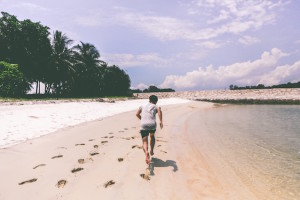
This wasn’t a choice for millennia. We ran from predators or after prey. We made haste to escape natural disasters or to aid our family, friends or tribe. This didn’t happen on concrete or with the assistance of motorized machines.
It wasn’t always carved out for pleasure, training or competition but nonetheless, it had great benefits.
This sort of running is mostly sprinting. It isn’t done for hours upon hours every week and there aren’t the issues that are associated with repetitive compression on pavement. In fact, efficiency wise, you can get in shape and improve your VO2 max much more significantly with HIIT (High-Intensity Interval Training) than long-distance jogging.
To recapture wild health, run wildly. Click To Tweet It’s also exhilarating and fun!
2. Long walks across varied terrain
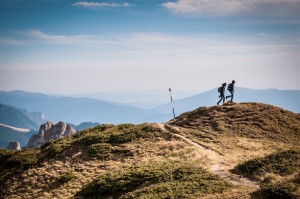
From long migrations to a seasonal movement for foraging and hunting advantages, humans are well built to walk for a long time. We are better suited to walk all day than to sit all day. Click To Tweet
If you want to sleep well at night and improve your mood, take a long walk through the woods, over a hill, across a field, down a beach, along a ridge or all of the above – there you’ll recapture wild health.
Walking can be like meditation. It creates a rhythmic pattern which syncs your respiratory rate and your heart rate in an even ebb and flows exchange. Great ideas are born of walking. Stress is released from walking. Walking after meals is an effective means to blunt blood glucose increases making it preventative of heart disease and diabetes.
There’s a lot more detail on the health benefits of walking here.
Standing on two feet and walking is one of the defining characteristics of being human.
3. Swim in natural bodies of water
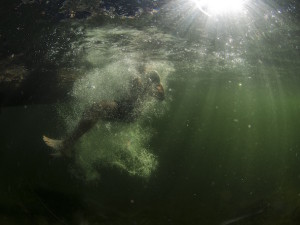
If nothing else swimming opened up opportunities for us to explore further and expand our world.
I don’t know about you but swimming in a river, lake or ocean is one of the most refreshing experiences I can have. It makes you feel alive. It’s no wonder water has had such spiritual significance across so many cultures and traditions. Water has often been used to symbolize a rebirth.
We are made of mostly water and spend 9 months in fluids as we develop in the uterus. Campsites, villages and eventually, cities, were set up by water for its intricate role in our survival. Whether we use it for drinking, navigating or washing, our connection runs deep.
You are more weightless in water. It is a great environment for healing. Swimming is one of the most effective all body exercises there is.
Water is life. It enables it. Sustains it. It is our blood. Click To TweetThere’s nothing like it on a hot, summer day!
4. Climb trees and rocks
Kids do this all the time… if we let them.
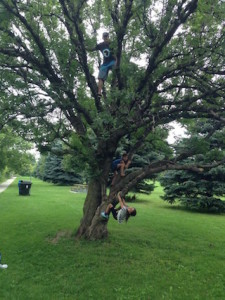
Our ancestors did this too. Whether it was to gain a vantage point to survey into the distance, hold a strategic position, store prized possession or climb to safety, get up a rock or tree is very much part of being human.
When George Mallory was preparing for his third attempt for the first ascent of Mt. Everest, he was asked, “why?”. He responded, “Because it’s there.”
Trees, rocks, and mountains have always been there and humans have set out to climb them for many reasons. It’s certainly great exercise, but perhaps the best reason is that it is fun.
Rock climbing has never been as accessible as it is nowadays. You can do it indoors but it’s even better outdoors. You don’t have to use ropes or even take on something hard. A simple scramble up a rocky slope using your hands is great.
There are climbable trees that are only a few feet off the ground. Don't worry, you won't get in trouble. You might even feel like a kid again. Click To Tweet If you need an excuse, borrow a kid and climb with them. 😉
To a kid, it’s natural. Often for an adult, it’s how to recapture wild health.
5. Carry and lift things
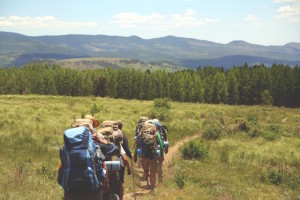
As is the case for many of these things, this practice is steeped in function. We need to carry things. It’s very useful. Whether our ancestors were transporting belongings, food or their children, lifting and carrying happened on a daily basis.
In times without machinery, carrying heavy loads for long distance was not unusual. This might be the single most functional physical human characteristic. It’s a combination of the supremely human act of walking upright and the ability to use our hands, arms, and backs to simultaneously transport things of importance.
Consistently carrying heavier loads is one of the best ways to improve your strength which I went over in the Strong Parent’s Guide.
If you can carry food, shelter and equipment then you are basically self-sufficient. Often this can only be done effectively by groups of people who share the load and the utility.
Some of my most rewarding experiences that resulting in me being in the best shape were the years I guided canoe trips. We would move over lakes and rivers in our canoes laden with all the equipment and supplies we needed to camp and survive. When we arrived at the end of a lake or a place in the river where we could no longer paddle, carry everything was our only option.
The art of the portage is both a physical feat, a mental test and a testament to human capabilities Click To Tweet To portage is to be human.
This is my go-to move when I want to recapture wild health.
6. Meditate
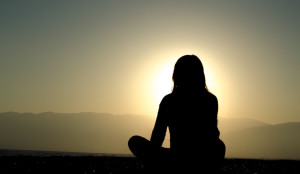
Before the internet, recorded music, TV and even books, humans found new worlds by exploring their surroundings and their inner landscape. The practice of meditation is recorded as far back as 3500 years ago in Hindu tradition. It probably goes even further back.
As far as anyone can tell it is both uniquely a human practice and yet transcends any particular stage of human development. The meditation practice of someone in New York today might yield the same benefits as someone in India 3000 years ago.
Today, much research has been done to support the emotional, cognitive and even physical benefits of meditation. While spiritual benefits are the first people think about, science seems to be reflecting what mystics have known for ages – it’s all connected.
Taking up meditation doesn’t have to be hard or overwhelming and you don’t need to hold on to any particular religious belief or tradition. In a world where there is very little quiet and noise is both all around us and in our head, meditation can aid with inner calm for remaining resilient to the turmoil we encounter.
Meditation: Give it a try. You have nothing to lose but your stress. Click To Tweet7. Practice yoga and/or martial arts
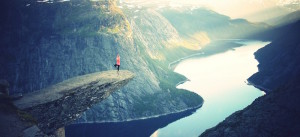
These are two different things and yet they reflect ancestral wisdom and the journey to self-mastery. By fostering discipline, we can unify mind and body to work in amazing ways together. Repeating movement patterns, again and again, controlling breath and flowing through each transition with mindfulness is an act of humanity at it’s best.
This kind of refinement can be less prevalent today as many people are disconnected from their bodies. The incredible popularity of yoga and martial arts is a reflection of the deep human desire to connect mind and body in flow. These expressions offer great health benefits in profound ways, especially when practiced with the same intentions that they originated with.
You can't take a class on self-mastery. It's a personal journey. Click To Tweet8. Observe the natural world

Perhaps the simplest act of humanity and yet deeply rewarding. We are too busy these days and forget the wonder of the world around us. Try to remember being a child and gazing at the clouds moving in the sky. Enjoying the feel of grass on your feet.
Watch animals move, a river flow, leaves blow in the wind. This is a meditation of its own sorts. It also aids in the feelings of belonging to the living planet we inhabit.
When we appreciate the nuances of nature, we take better care of it and we respect ourselves more too. Click To TweetWhatever your tradition, humans are unique in their ability to protect and destroy the environment around them. To recapture wild health is to support the wild around us. Our health and fate are directly tied to nature’s health.
9. Eat food that comes directly from the land
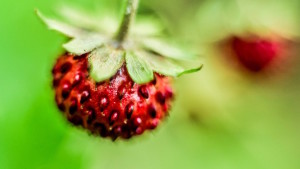
Now we get into what the Paleo diet captures really well. Today, it’s called organic. 75 years ago, it was just called food. Our ancestors ate what nature gave them. Through hunting and foraging, we can connect to true nourishment by eating real food.
If you don’t want to move like a human, with any of the examples above or practice mindfulness like a human either, you can still recapture wild health by choosing food that is as wild as possible.
Most of us can’t go hunt for all our food or forage enough plants to survive but we can choose the nutrient-rich food that is unadulterated by chemicals, hormones, antibiotics and raised in ways that come closer to how it existed in its natural state.
When we choose food that is found in the wild, we #ChooseWithEnergyInMind Click To Tweet[interaction id=”570600701de22512495c9700″]
Recapture Wild Health Or Be A Child Naturally
You can see there is a long list of ways to bring some balance back to a world often filled with virtual sensation instead of real substance. I enjoy the benefits of technology but I truly believe living fully requires us to hold on to the proven success of human existence that has lasted for thousands of years.
It doesn’t have to be complex. In fact, if children were left to their own devices, they would likely live wildly and in great health. Children undomesticated don’t need to recapture wild health, they personify it.
It’s worth reflecting on our direction, if not for us then for our children. When books like Last Child in the Woods: Saving Our Children From Nature-Deficit Disorder clearly lay out the negative impact that is occurring as we become more distanced from nature and our undomesticated ancestors, we would be wise to take note.
Be civilized but remain, at least, a little, wild.
I’ll leave you with a fitting video from Rafe Kelley of Evolve Move Play. It’s his phrase, “move like a human” that inspired this article. This video captures some of the dichotomies we face as we exist within the stimulation of a digital, synthetic age but truly thrive through natural and organic nourishment.
Rafe will be at Beacon Hill Park at the end of this month to showing us how “move like a human”. If you are in the area come Evolve Move Play. Get more info here.
“A key concept for living a more human life, stimulation vs nourishment, watch the video to learn more. Irony alert at the end, have to spread the message however we can.”

